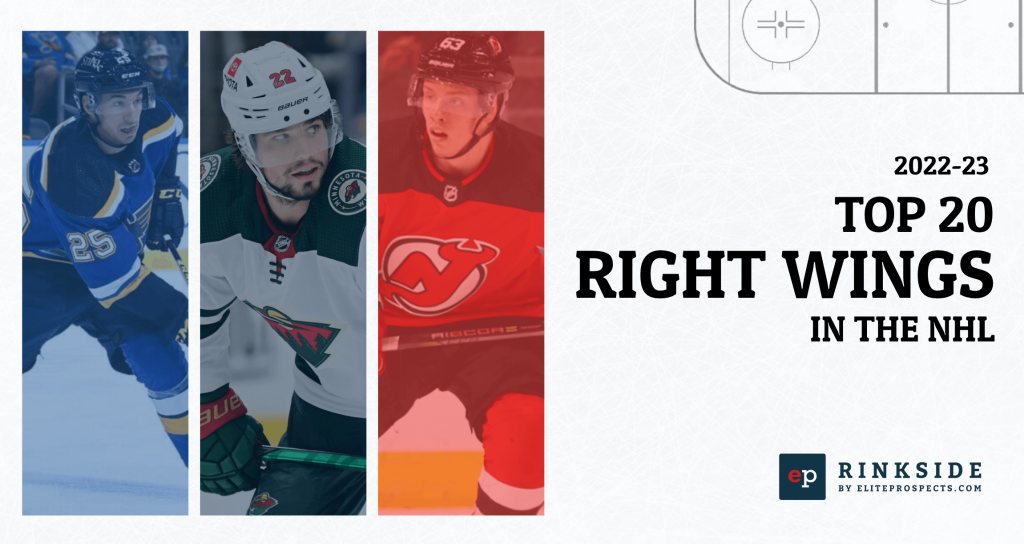Analyzing the 2022 offseason's biggest RFA contracts

As the folk legend Bob Dylan famously said (I’m assuming in reference to the 1964 NHL free agent market), “the times, they are a-changin'.”
NHL teams are slowly but surely getting smarter, better able to recognize the pitfalls of paying a lot of money over several years for past performance, rather than investing in the future. It only took dozens of cap dumps and buyouts, but at least we got there in the end.
Statistical advances have demonstrated not only that players’ peaks on average span mostly their “Restricted Free Agent” years (23- to 26-years-old), but that lengthy contracts signed to players who reach unrestricted free agency almost always end in catastrophe. By ensuring that promising young players are locked up through their primes, teams can limit their reliance on older, declining options and maybe even save some cap money in the long term.
This summer, we saw this trend hit a fever pitch. Last year’s seemingly premature long-term deals for centres Nick Suzuki and Jack Hughes were only the start of an avalanche of long-term RFA deals, almost all of them given to players with very limited track records. While they aren’t as foolish as the classic July 1st UFA deals, they do carry their own risks, especially as the market has trended more in their direction.
While we wait for what should be the final jewel in this crown -- Dallas Stars superstar Jason Robertson -- it’s worthwhile to reflect on this market and assess the riskiness of all eight long-term, big-money extensions given to RFA-aged players during the 2022 offseason. I’ll be assessing these deals based on three criteria: the current quality of the player, their potential over the course of the deal, and how “safe” a bet the player is to be worth their deal in the aggregate.
Great Track Record, Career Year
Kevin Fiala – LW, Los Angeles Kings
Contract: 7 years, $7,875,000 per year.
Age 26-32 seasons.
Current Player Quality: 9/10
Potential: 9/10
Safety: 8/10
The oldest player on this list, Fiala turned 26 this season following a career-best 85 points in 82 games. Despite never quite having the confidence of Minnesota Wild management (culminating in his own general manager claiming he had had a poor playoffs and “three good months”), Fiala has been an analytical favourite for years due to his well-rounded offensive skill set and efficient production; the Wild typically limited his ice time to second-line minutes, but in the past three seasons he ranks 12th in points per 60 minutes at 5-on-5 and 33rd on the power play. He leaves something to be desired defensively, but that’s a bit of a theme on this list and he at least doesn’t rank among the absolute worst.
I'm not worried about Fiala’s ability to produce during this contract; his track record is exceptionally strong, and while decline will probably begin fairly soon, the Kings are likely assured that he will remain an excellent contributor. Risk is introduced by the fact that he is one of only two players on this list switching teams and that he is older than the rest, but the cap hit is eminently reasonable and his age allows us a much larger sample to marvel at.
Matthew Tkachuk – LW, Florida Panthers
Contract: 8 years, $9,500,000 per year.
Age 26-33 seasons.
Current Player Quality: 9/10
Potential: 9/10
Safety: 7/10
It seems almost absurd to suggest that the guy who just scored 100 points wouldn’t be the safest bet to fulfil a long-term contract. Tkachuk is one of the top all-around wingers in the league, a power-forward slash playmaker slash sniper who has been effective both as the driver of his own line and as a second-fiddle. He’s physical, he’s an excellent passer, he draws penalties, he carries the puck in transition, and he has high upside in every area of the game.
The only real concern is that his game has suffered from a lack of consistency. 2021-22 was his only point-per-game season (although he came close in 2018-19), and his production in the preceding two seasons was very much not franchise-forward level. How much should we raise our eyebrows about a once-in-a-lifetime performance on an exceptional line that has now been permanently split?
At the end of the day, though, there's no question about Tkachuk’s underlying ability to create offence, and even if certain aspects of his game regress he’s still an extremely valuable player. It’s also not too late to think that he might have room to grow and develop his game, especially as he is once again asked to carry a line himself.
Signs of Sustainable Stardom
Robert Thomas – C, St. Louis Blues
Contract: 8 years, $8,125,000 per year (starting 2023-24).
Age 24-31 seasons.
Current Player Quality: 9/10
Potential: 9/10
Safety: 7/10
Some players are pretty good at a lot of things – you can carve out a nice career if you can be counted on to perform decently in every area of the game. Thomas is really really good at one thing, and it’s made him a rich man.
For a couple years now, Thomas has been a bit of a low-key bound-to-break-out player among a small subset of the hockey stats community due to his excellent passing metrics. A career-high of 42 points entering the season and an abbreviated and unproductive 2020-21 campaign did not dissuade these expectations, and it all paid off. On pace for 64 assists and 87 points, Thomas produced 5-on-5 primary assists at a higher rate than anyone not named Johnny Gaudreau while ranking near the top of the league in chance assists and high-danger passes as well.
At 23, you can make the case that Thomas is already a top-five passer in the sport (and if you were ambitious you could narrow that list down even more). That’s encouraging to say the least. The holes in his game -- like poor defence and a lack of goalscoring -- might improve with time, or they might not. But this is an easy deal to feel confident about.
Jordan Kyrou – RW, St. Louis Blues
Contract: 8 years, $8,125,000 per year (starting 2023-24).
Age 25-32 seasons.
Current Player Quality: 9/10
Potential: 9/10
Safety: 8/10
The mirror image of Thomas, the deal Kyrou got to be the heir to Vladimir Tarasenko in St. Louis might be even better. Sure, he’s slightly older, but he’s only a bit worse a passer than his teammate with an even more dynamic offensive game. Kyrou’s exceptional speed makes him one of the top rush players in the game, making the opportunities he creates extra dangerous. He goes end-to-end like few others and can both snipe in transition and dish high-danger passes across the net. His shiftiness makes him a prolific penalty drawer as well. Defence is still missing, and given his style of play may never come. But it’s not hard at all to envision this player as a consistent point-a-game player for several years to come.
You Can Do That Again, Right?
Josh Norris – C, Ottawa Senators
Contract: 8 years, $7,955,000 per year.
Age 23-30 seasons.
Current Player Quality: 7/10
Potential: 9/10
Safety: 5/10
The contract most directly comparable to the Suzuki deal, in their eagerness to lock up the whole core long-term the Senators made a costly bet that the leap in production Norris saw this year is a sign of things to come. He scored at a 43-goal, 68-point pace, a healthy jump from his rookie season and well in the range for a huge second contract.
Unlike some of the league’s most prolific goal scorers, Norris is not a particularly prolific offensive weapon when it comes to creating shots or scoring chances. He doesn’t carry the puck very often, isn’t the most prolific passer, and despite his 16 percent 5-on-5 shooting percentage he ranks only 49th in goals per 60 at even strength. What the Senators are paying for more than anything is what he has done on the powerplay -- he shot 23 percent and scored 16 power play goals this season, tied for third in the league. The risky part here is that power play scoring is extremely unpredictable; unless he’s a truly elite sniper, they’ll need a lot more out of him at 5-on-5.
The upside here is a 40-goal scoring centre in the Mika Zibanejad mould -- a prized asset that many teams would love to have. You could also hardly ask for better term on an RFA contract; whatever Norris turns out to be, the Senators will almost certainly get the best of it. The downside will come if the extreme scoring efficiency evaporates and the rest of his game doesn’t round out.
Tage Thompson – C, Buffalo Sabres
Contract: 7 years, $7,142,857 per year (starting 2023-24).
Age 26-32 seasons.
Current Player Quality: 7/10
Potential: 8/10
Safety: 3/10
When the Buffalo Sabres decided to get ahead of things and lock up Thompson before finding out whether he can follow up his shocking breakout performance, the hockey world was decidedly and justifiably split. To some, this is an absurd overpay for a player who just one year ago was considered unfit to play in an NHL lineup. To others, this is a smart move to lock in a player with the talent to be one of the top scorers in hockey for years to come.
The simplest story you could tell with stats is that Thompson went from being an eight-goal, eight percent shooter to a 38-goal 15 percent shooter overnight and that we have learned repeatedly that paying players based on such sudden leaps in finishing is unwise, considering it’s one of the most random aspects of the sport. There’s something missing from that account, however; he switched from being a forechecking power forward winger to a centre who could hang back in the high slot and whip shots off passes from his own wingers. Watch his goals from this season, and the constant theme is wingers getting him the puck and him picking a corner a second later.
That consequential change in deployment, combined with very strong individual shot and chance creation, is certainly encouraging, and justifies this leap from a franchise desperate for stability. The poor passing and defensive play are hard to ignore from a centre, however, and if we assume that some type of regression is probably coming (if not as extreme as one usually expects), that would diminish his impact.
Well, the Talent is There...
Mikhail Sergachyov - LD, Tampa Bay Lightning
Contract: 8 years, $8,500,000 per year (starting 2023-24).
Age 25-32 seasons.
Current Player Quality: 6/10
Potential: 8/10
Safety: 4/10
This one I’m… not so sure about. I understand the rationale here for the Lightning: Sergachyov is approaching his prime, produces at a strong rate in top-pair minutes, and has two Stanley Cup rings to his name already. With Victor Hedman entering his 30s, they see Sergachev as ready to emerge as a legitimate No. 1 defenceman.
I’m not quite as sold. Sergachyov does have an enticing skill set; he’s a smooth skater, he passes the puck well, and his strong primary assist numbers are reflective of a high-end process in the offensive zone. Next to a defensive specialist like Erik Černák, who was also extended long-term on the same day, there’s room for that toolkit to develop. But with a bigger role also comes bigger responsibilities, and Sergachyov’s results in relatively soft minutes so far in his career have been consistently middle-of-the-pack. He’s decent but not exceptional in transition, his defensive game leaves something to be desired, and he takes a lot of penalties. This is a contract the Lightning need him to grow into, but his progression has been more stagnant than linearly positive. It’s all about faith in the talent here.
Tim Stützle – C, Ottawa Senators
Contract: 8 years, $8,350,000 per year.
Age 21-28 seasons.
Current Player Quality: 6/10
Potential: 9/10
Safety: 7/10
Like Norris, Stützle’s extension was earned both by virtue of being a crucial part of the core and a rapid escalation in production that gave the team reason to believe they’re best up locking him down before the ask gets even higher.
There are parts of Stutzle’s game that are already there, and some that are still a major work in progress. There is no doubt about his puck skills when it comes to stickhandling -- he ranked in the top five in the league in open ice dekes and has the best minor penalty differential of anybody in the league save Connor McDavid so far in his career. His shiftiness forces opponents to take infractions and often leads to dazzling plays. Stützle also flashes a dazzling shot on occasion; he doesn’t score too often, but when he does it’s almost always a perfect snipe off the post and in.
What’s missing is for him to learn how to use his linemates effectively, creating quality opportunities within the offensive zone instead of just off the rush. While he didn’t play with particularly creative linemates in 2021-22, they inescapably had better results without him, and even during his most productive stretch of the season the Senators got hugely outshot and out-chanced with Stützle on the ice compared to the rest of his team. A huge chunk of his 2021-22 production came with the man advantage, and with the addition of Claude Giroux and Alex DeBrincat to his line, he will have the chance to show that he can be a real ice-tilter at even strength.
Stützle has pedigree and he has undeniably shown flashes of greatness in his career. The ready-to-compete Senators have stakes a lot on him becoming a true No. 1 centre, and there’s no better long-term deal than one that covers the age 21 to 28 seasons. To earn this deal, he has to make a leap that most expect to be well within his wheelhouse.


